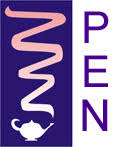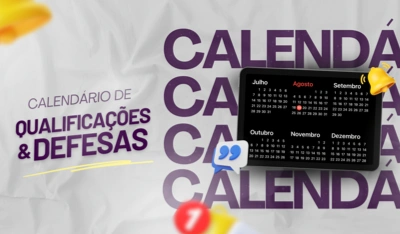Imaginário das pessoas com lesão medular e suas famílias sobre a dança em cadeira de rodas e a educação somática no quotidiano da reabilitação para a promoção da saúde
Dissertação (Mestrado)
Author: Cachoeira, Nicole da Rosa
Contributor Advisor: Nitschke, Rosane Gonçalves
Date Issued: 2021
Description: Dissertação (mestrado) - Universidade Federal de Santa Catarina, Centro de Ciências da Saúde, Programa de Pós-Graduação em Enfermagem, Florianópolis, 2021.
Description Abstract: Trata-se de pesquisa com abordagem qualitativa do tipo Convergente Assistencial, realizada no Sul do Brasil. Fundamentada na Sociologia Compreensiva e do Quotidiano de Michel Maffesoli, teve como objetivo compreender o Imaginário da Dança e sua relação com a Educação Somática no Quotidiano do Processo de Reabilitação de Pessoas com Lesão Medular e de suas Famílias para a Promoção da Saúde. O estudo foi realizado virtualmente, devido ao cenário pandêmico da COVID-19. Os participantes da pesquisa foram cinco pessoas com lesão medular e dois familiares. A coleta de dados ocorreu entre setembro de 2020 e fevereiro de 2021, por meio de entrevistas individuais, com roteiro semiestruturado e entrevistas coletivas, utilizando a estratégia das Oficinas Virtuais de Dança em Cadeira de Rodas, adotando uma plataforma online e a metodologia do Projeto Ninho. Os dados foram registrados em gravador digital e, posteriormente, as informações transcritas na íntegra no programa Microsoft Word®. Para a organização dos dados adotou-se o Diário de Campo. A análise de dados envolveu: apreensão, síntese, teorização e transferência. Resultados: Esta pesquisa resultou em quatro manuscritos. No primeiro, intitulado Educação Somática e Dança na Reabilitação de Pessoas com Lesão Medular: revisão integrativa da literatura, buscou-se analisar as produções de conhecimento envolvendo a Dança e a Educação Somática na reabilitação de pessoas com lesão medular, no período de 2013 a 2019. Evidenciou-se a necessidade de conhecer a eficácia e limitações dessas práticas somáticas e a dança, a fim de estabelecer um cuidado efetivo às pessoas com lesão medular. No segundo manuscrito, o Imaginário da Dança em Cadeira de Rodas no Quotidiano de Pessoas com Lesão Medular e suas Famílias em Tempos da Covid-19, descreve-se o significado da dança em cadeira de rodas como: ?liberdade?, ?prazer?, ?movimento?, ?relaxamento?, ?música? e ?felicidade?; e a transformação do imaginário da dança ?antes?, ?durante? e ?após? a vivência das Oficinas. No terceiro manuscrito, o Quotidiano da Reabilitação de Pessoas com Lesão Medular e Famílias ao Vivenciar a Dança em Cadeira de Rodas no Contexto da Covid-19, evidencia-se um quotidiano sobrecarregado e marcado pelo adoecimento mental. Ao vivenciar as Oficinas Virtuais, esse quotidiano se transfigurou pela presença da disposição, relaxamento, injeção de alegria, movimento do corpo e música. As potências se manifestaram pela ?força que está em nós?, ?tecnossocialidade?, ?pessoas?, ?alegria?, ?diversão? e ?saúde mental?. Os limites identificados foram: ?plataforma digital? e ?limites físicos?. No quarto manuscrito, Contribuições da Dança em Cadeira de Rodas no Processo de Reabilitação de Pessoas com Lesão Medular e suas Famílias para a Promoção da Saúde em Tempos da Covid-19, contemplou-se o significado da Promoção da Saúde e as contribuições das Oficinas Virtuais, que abrangeu as noções de ?Corpo e Mente?, ?Mexer o Corpo?, ?Estar de Bem? e ?Dar um pouco de si?. As contribuições foram: ?Coletividade?, ?Alegria?, ?Diversão?, ?Relaxamento? e ?Movimento do Corpo?. Conclusão: As Oficinas Virtuais de Dança em Cadeira de Rodas constituem uma possibilidade de cuidado sensível e integral no processo de reabilitação de pessoas com lesão medular e suas famílias para a Promoção da Saúde.
Description Abstract - ENG: Abstract: This is a study with a qualitative approach of the Convergent Care type. It was carried out in southern Brazil based on the theoretical framework of Michel Maffesoli's Comprehensive and Everyday Sociology. It aims to understand the Imaginary of Dance and its relationship with Somatic Education in the Daily Life of the Rehabilitation Process of People with Spinal Cord Injury and their Families for Health Promotion. The study was carried out virtually, due to the COVID-19 pandemic scenario. Research participants were 5 people with spinal cord injury and 2 were their families. Data collection was carried out between September 2020 and February 2021, through individual interviews, with a semi-structured script and group interviews, adopting the strategy of virtual wheelchair dance workshops through an online platform, which used the methodology of the Nest Project. Data were recorded in a digital recorder and, later, the information was transcribed in full in typed text in Microsoft Word® program. To organize the data, the notes procedure was adopted. Data analysis involved: apprehension, synthesis, theorization and transfer, guided by the notions of Comprehensive and Everyday Sociology. Results: This research resulted in four manuscripts. In the first manuscript, somatic education and dance in the rehabilitation of people with spinal cord injury, the literature review, we sought to analyze, from the literature, the productions of knowledge involving Dance and Somatic Education in the rehabilitation of people with spinal cord injury, in the period from 2013 to 2019. An analysis of the scientific evidence supports the need to know the effectiveness and limitations of these somatic practices and dance, in order to establish effective care for people with spinal cord injury. In the second, the imaginary of wheelchair dancing in the daily lives of people with spinal cord injury and their families in the days of covid-19, the meaning of wheelchair dancing is described, as: ?freedom?, ?pleasure?, ?movement?, ?relaxation?, ?music? and ?happiness?; and the transformation of the dance imaginary ?before?, ?during? and ?after? the experience of the Workshops. In the third manuscript, the daily life of rehabilitation of people with spinal cord injury and families when experiencing dance in a wheelchair in the context of covid-19, shows an overloaded daily life marked by mental illness. When experiencing the virtual Workshops, this daily life was transfigured by the presence of disposition, relaxation, injection of joy, body movement and music. We also sought to highlight the strengths and limits when experiencing the Workshops, the strengths manifested through the ?strength that is in us?, ?technossociality?, ?people?, ?joy?, ?fun? and ?mental health?. The identified limits were the ?digital platform? and the ?physical limits?. In the fourth manuscript, contributions of wheelchair dancing in the rehabilitation process of people with spinal cord injury and their families for health promotion in the days of covid-19, contemplated the meaning of health promotion and the contributions of virtuais workshops, which covered the notions of ?Body and Mind?, ?Move the Body?, ?Being Well? and ?Give a little of yourself?. The contributions were ?Collectivity?, ?Joy? and ?Fun?, ?Relaxation? and ?Movement of the Body?. Conclusion: We consider that virtual wheelchair dance workshops are a possibility for sensitive and comprehensive care in the rehabilitation process of people with spinal cord injury and families for health promotion.



